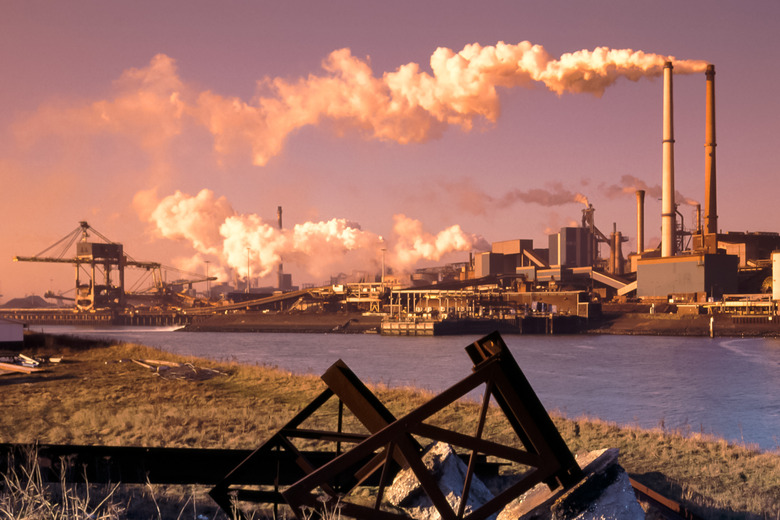Effects Of Carbon Footprint
A carbon footprint is a measure of carbon dioxide emissions associated with an entity's activities. According to Encyclopedia Britannica, a carbon footprint includes direct emissions, such as from driving a car, as well as whatever emissions are required to consume any goods and services. Often, a carbon footprint includes the measure of other greenhouse gas emissions as well. The United States, with only 4 percent of the world's population, contributes 25 percent of the world's greenhouse gases. The average American produces about 20 tons of carbon dioxide each year. A large carbon footprint has detrimental effects on the environment.
Greenhouse Gas Emissions
Greenhouse Gas Emissions
Electricity generation and transportation-related activities account for well over half of the 14 percent increase in greenhouse gas emissions in the United States from 1990 to 2008. The Federal Transit Administration estimates that switching to public transportation instead of driving would allow the average American to reduce his or her carbon footprint by 10 percent. Americans could also reduce their collective carbon footprint by changing their incandescent bulbs to compact fluorescent lights, preventing the emission of 9 billion pounds of greenhouse gases.
Climate Change
Climate Change
Climate change is the ultimate effect of large carbon footprints. Greenhouse gases, whether natural or human-produced, contribute to the warming of the planet. From 1990 to 2005, carbon dioxide emissions increased by 31 percent. By 2008, the emissions had contributed to a 35 percent increase in radiative warming, or a shift in Earth's energy balance toward warming, over 1990 levels. The decade from 2000 to 2009 was the warmest decade on record worldwide, according to the U.S. Environmental Protection Agency's Climate Change Indicators Report.
Depletion of Resources
Depletion of Resources
Large carbon footprints deplete resources on large and small scales, from a country's deforestation activities to one home's increased use of air conditioning. The more those with large carbon footprints use resources, the more greenhouse gases increase and spur further climate change. The Environmental Protection Agency suggests that consideration of different energy supplies and conservation of current ones will be needed to balance energy demand. Reducing carbon dioxide emissions as much as possible and off-setting the remaining emissions by planting trees, for example, or supporting alternative energy efforts, will help to reduce the negative effects of carbon footprints.
Cite This Article
MLA
Jaines, Kira. "Effects Of Carbon Footprint" sciencing.com, https://www.sciencing.com/effects-of-carbon-footprint-4984464/. 5 December 2018.
APA
Jaines, Kira. (2018, December 5). Effects Of Carbon Footprint. sciencing.com. Retrieved from https://www.sciencing.com/effects-of-carbon-footprint-4984464/
Chicago
Jaines, Kira. Effects Of Carbon Footprint last modified March 24, 2022. https://www.sciencing.com/effects-of-carbon-footprint-4984464/
